Finance sector development
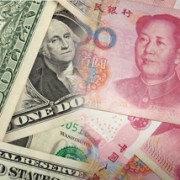 Governance and public sector management
Governance and public sector management
 Governance and public sector management
Governance and public sector management
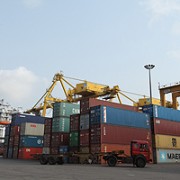 Industry and trade
Industry and trade
 Industry and trade
Industry and trade
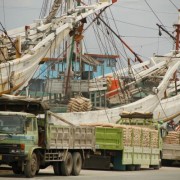 Population
Population
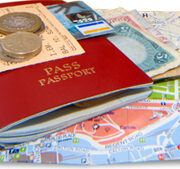 Regional cooperation and integration
Regional cooperation and integration
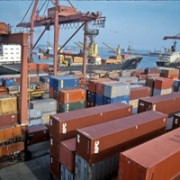 Governance and public sector management
Governance and public sector management
 Regional cooperation and integration
Regional cooperation and integration
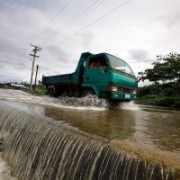 Population
Population
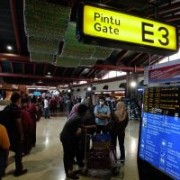
Renminbi currency valuation: A welcome change in US policy

One benefit of the fragile yet continuing growth in the United States (US) economy over the last 12 months is the restraining effect it has had on US political leaders who regularly clamor for the US to punish the People’s Republic of China (PRC) to raise the value of its currency. The PRC’s exchange rate policy and the presumed threat it poses to US jobs has been a topic of debate in the US Congress for years. Critics of the PRC maintain that the US president, no matter what the political party, needed to staunch the flow of US jobs to the PRC by demanding that it increase the value of the renminbi or be punished by being labeled a currency manipulator.
Asia’s addiction to fossil fuel subsidies continues unabated

At the 2009 G20 Pittsburgh Summit, leaders recognized the problem of fuel subsidies and made a commitment “to rationalize and phase out inefficient fossil fuel subsidies” (G20 2009). But Asian economies have gone the other way, and are pushing economic growth at a breakneck pace underpinned by fuel subsidies not only to consumers, but also to oil companies, mostly through production incentives. These subsidies have created an expectation that gas and oil are cheap and plentiful fuels available on demand. Yet without oil, the world would grind to a halt and chaos and social upheaval would probably ensue. Alternative and renewable energy resources are simply not yet available on a large commercial scale, leaving many people without recourse.
Have APEC Five been penalized for not achieving the Bogor Goals?

This is the first question I have met across at the ADBI seminar on APEC on January 28th. Of course they have not. Nobody raised this within APEC, because APEC is a non-binding organization. But so long as APEC sticks in its weak modality, it may get left behind mushrooming FTAs. What is the APEC’s raison d’etre nowadays? Established in 1989, APEC seeks to promote trade and economic cooperation in the Asia and Pacific region. In 1994 in Bogor, Indonesia, APEC leaders pledged to achieve free and open trade and investment in the Asia and Pacific region by 2010 for developed members and by 2020 for developing economies.
The PRC is not yet the world’s No. 1 trading nation

Since the People’s Republic of China (PRC) surpassed Japan as the world’s second largest economy in 2010, guessing when the PRC would eclipse the United States (US) as the world’s largest economy has been an exciting game among PRC watchers. On 10 February came the surprising news that the PRC had surpassed the US to become the world’s No. 1 trading nation, after both countries officially announced their 2012 trade figures. According to the US Department of Commerce, total US trade in 2012 amounted to $3.82 trillion, about $50 billion short of the PRC’s exports and imports of $3.87 trillion, estimated by China Customs.
Openness and infrastructure are key to growth in Indonesia

Slowing growth and rising unemployment sometimes induce economies to become more inward-oriented with restrictive policies. Indonesia shows early signs of such tendencies and its future growth may be at risk. The experience of high performing East Asian economies, however, suggests that outward-oriented policies and infrastructure investment support sustainable growth. Indonesia’s growth slowed to 6.2% in 2012 from 6.5% in 2011. Its growth in the previous decade was below 6%. A slight dip notwithstanding, a turnaround seems to be continuing in this resource-rich economy once seen by the West as a basket case of crony capitalism during the 1997–1998 Asian financial crisis.
The role of foreign migrant workers in several economic successes in Asia and the Middle East

Seven of the world’s ten richest economies by real gross domestic product (RGDP) per capita are in Asia and the Middle East, and all have sizeable populations of foreign migrant workers (FMWs) that have contributed greatly to growth. The proper handling of FMW involvement in an economy is crucial for continued prosperity. Despite the widespread reliance of many economies on FMWs, much of the related research has focused on the narrower issue of the impact of foreign labor on local employment and the resultant downward pressure on local wages (e.g., Borjas et al. 1996. Goto 1998). In comparison, very little evaluation has been done on the extent of their contribution to economic growth across countries.
Japan must join the Trans-Pacific Partnership Agreement talks

Time is running out for Japan to join the Trans-Pacific Partnership Agreement (TPP), as the negotiating countries aim to conclude the talks before the Asia-Pacific Economic Cooperation (APEC) meeting in October this year. Although former Japanese Prime Minister Yoshihiko Noda had expressed strong interest during his tenure in joining the TPP negotiations, his successor, Prime Minister Shinzo Abe, has not expressed similar sentiments as the Liberal Democratic Party (LDP) took a cautious stance on the TPP during Japan’s December 2012 general election. The TPP is a high-standard and comprehensive trade agreement under negotiation by Australia, Brunei Darussalam, Canada, Chile, Malaysia, Mexico, New Zealand, Peru, Singapore, the United States (US), and Viet Nam.
Is political union Europe’s solution to the eurozone crisis?

Is fiscal and/or political union, where more sovereignty is shared among countries in Europe’s Economic and Monetary Union, the way forward for the eurozone to stay together and deal with economic and financial divergences among member states? Differences in size, development, and institutions present the monetary union with a policy coordination dilemma, as countries often tend to let domestic interests prevail on agreed commitments. At the current juncture, and learning from the sovereign debt crisis, the countries of Europe need to consider what is the best institutional framework for the monetary union. Such a framework should avoid the building up of imbalances and help countries to live with the euro and within the currency union. Is political union the way forward for EMU? Surely continuing the status quo is not an option.
Natural Disasters and Production Networks in the Asia and Pacific Region

Recent decades have witnessed a rapid expansion of production networks and supply chains in East and Southeast Asia, made possible by underlying forces of technological advances and reductions in trade barriers and driven by pursuit of economies of scale and agglomeration, and greater efficiency and lower costs. The successful functioning of such finely constructed and balanced production networks and supply chains rests, however, on the premise of there being no major disruptions to the system, including natural disasters. Historical data indicate that the East and Southeast Asia region is, in fact, especially prone to a variety of natural hazards (earthquakes, tsunamis, floods, and typhoons).
Migration matters: the race to ensure a future supply of workers in Asia

While there has been strong promotion of free global trade in goods and services as well as in capital inputs, the case has not been made so forcefully for increasing the international mobility of the other factor of production, labor. A recent article in The Economist, Free Exchange—Border Follies, surveys the latest research on the potential benefits of increasing international labor migration (The Economist 17 November 2012). The estimates are staggering, with possible increases in world output and income ranging from 30% to 100% (amounting to an additional $20 trillion to $70 trillion) depending on the level of migration assumed. These calculations swamp the potential benefits of increasing international trade, which is estimated to be less than 3% of global output. The research shows that the gains come from migration-induced productivity increases in the host country and the additional incomes are more than sufficient to compensate for any adverse effects, for example, if wages for some host country workers fall in the short term. Remittances (worth around $300 billion a year) are also sent to the migrant source countries to compensate those who stay behind.


Search
Subscribe / Connect to Asia Pathways
Subjects
- Agriculture and natural resources
- Blog
- Capacity development
- Climate change
- Economics
- Education
- Energy
- Environment
- Finance sector development
- Gender
- Governance and public sector management
- Health
- Industry and trade
- Information and Communications Technology
- Infrastructure
- Miscellaneous
- Population
- Poverty
- Private sector development
- Regional cooperation and integration
- Sanitation
- Social development and protection
- Transport
- Uncategorized
- Urban development
- Video Blog
- Water
Recent Posts
- Artificial intelligence: A new driver for inclusive growth and development?
- Increasing trust in cross-border e-commerce and artificial intelligence
- Enhancing access to maternal and newborn healthcare in developing Asia
- Can electric vehicles lead the way to a sustainable future?
- Mitigating climate-related sovereign risk to accelerate action on the climate emergency




Recent Comments